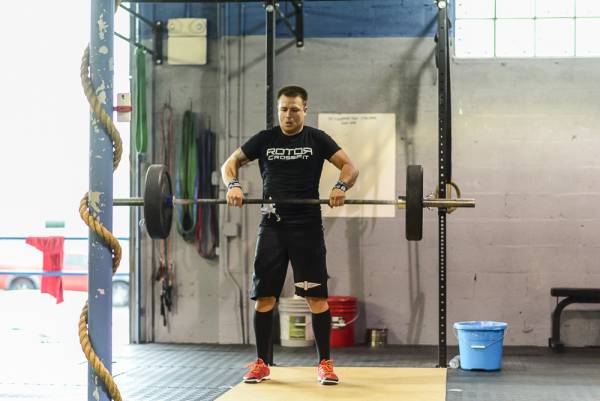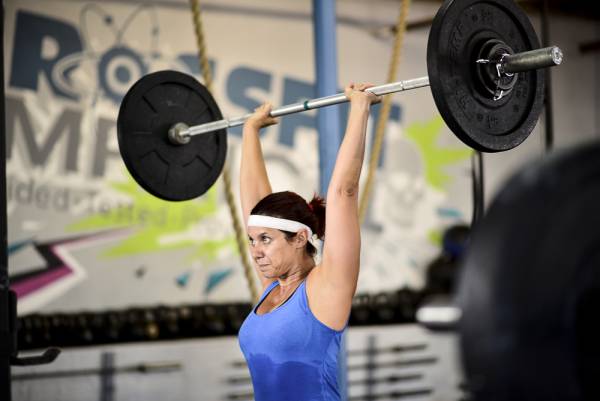You know the scenario. You come away from a lifting session and it’s been far from perfect. You’re not sure whether you have progressed at all and feel like you may even have gone backwards. You have no idea how to go about “fixing” your lifting.
As a consequence, you feel annoyed, frustrated, and in a bad mood. And then, you have another bad session. Perhaps more than one. Now you start questioning the program, and probably end up changing it. Clearly, your current program wasn’t working for you.
Sound familiar? What if I could stop you from feeling frustrated and fix your current program?
Your Perfect Session
Sometimes, you have awesome days where everything just flows. Other times, it feels like you’ve forgotten how to lift. Why does this happen? The truth is, I don’t have an answer for you. There are too many variables. But I can offer you something better and help you work out the answer for yourself.
Let’s say for now that if you had a perfect session every time, you would be happy. Fair enough? The problem is, your vision of a perfect session is, well, imperfect.
We first need to take a look at your expectations. Would you expect something you cook to be perfect every time? I don’t. Even when I use the same ingredients in the same amounts, using the same pan, and the same method of preparation.
So why would you expect a complex movement, using different bars, different weights, and with different preparation in terms of sleep, nutrition, previous workouts, and warm up to be perfect every time? All it takes in either case is a small change in one ingredient to throw the whole thing out of kilter. So, don’t be surprised when it happens.

Four Steps to Assessing Your Ideal Training Patterns
So perhaps you set your expectations too high. As far as I’m concerned, no one can be super-awesome all of the time. Unless you are a full-time professional athlete (and even then), life gets in the way. As much as we don’t like this, we have to accept it. But that’s not to say we can’t work with our life schedule.
Here are four steps to assessing your training patterns (and reassessing your expectations):
- Log Your Training: If you don’t do that already, I don’t want to hear about how your session wasn’t perfect as you have no reference point at all. Start logging your training sessions in a lot of detail.
- Spot Patterns: Look at both the smaller pieces and the bigger picture. What training session felt particularly good or bad? Look at the surrounding events. How was your sleep at that time? Your nutrition? Your work? Your family? Your schedule?
- Spot Big Patterns: The third step is taking that mind-set out to your schedule at large. What time of year do you feel you can really give it your all? When might you need to be careful? When in the calendar do you find it hard to train?
- Apply What You Learned: Now take all this information and plug it back into your schedule and program.
Your Perfect Session – Revisited
By plugging the patterns from these four steps into your program, you now have an idea of what you can expect from each session. You can adjust your training and your expectations accordingly.
A perfect session now becomes one where you do what you set out to do. And as we have seen, that doesn’t always mean getting personal records. Sometimes (okay, a lot of the time), training simply needs to be about turning up, being present in the session, and getting the work done. That’s it.
Use these examples to work out what you can expect from your sessions during hard times and easier times:
On a Low Day: Personally, a perfect session for me on a day like this is one where I do all the work, pain free. Sure, I look for progress, but it doesn’t always show in the obvious ways. Often, progress comes through quality of movement, speed of movement, or simply learning why I’m moving in a certain way on a certain day.
On a High Day: On days where I feel I can expect more, I look to progress through learning how to replicate good lifting, how to stay away from bad lifting, or at least how to get through the bad sessions. Being able to replicate a heavier weight consistently on any given lift is much more valuable to me than taking a shot at my lifetime max through a fleeting, make-or-break, all-out attempt.
Now, let’s “fix” your current program. Hopefully by now you will see that your program is most likely fine. Through managing your training and expectations, you’ve learned how to make it work for you.

Your Perfect Program
The search for the perfect program can leave you hopping from program to program, never truly happy, always looking for a new plan rather than the ways you can give more to the existing one.
The more you go through the four-step training pattern process above and learn about yourself, the better your understanding of what perfect actually is for you. The strength and fitness industry markets itself through the promise of a new-and-perfect program, just for you. But there are no perfect programs. “Perfect” means “perfect for you.”
It’s easy to cast the blame onto what you are doing, rather than analyze how, when, and why you are doing it. Go back to the scenario at the beginning, and see that your frustration were born out of your desire for perfection. Follow the four-stage progress above. Work out when you can expect to fly, when you might be inconsistent, and why you should be happy that you were able to train and stay free of injury. You’ll feel happier with your training, because expecting your old version of perfection all the time is a fast track to disappointment and burnout.
Now you have a purpose for each session and for each stage in your program. The next time someone asks you how your session was, see if you did what you set out to do at that point in your own unique training schedule. If you did, stop yourself from answering with “Good, but I could have done this better” or “Okay, but that felt a bit rubbish today.”
Answer that your training session was perfect.
Photos courtesy of CrossFit Empirical.






